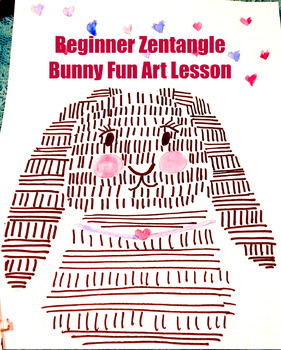Zentangle Inspired Rabbit Art Project and Brief History Lesson
- PDF
Description
Are you looking for a fun and engaging way to introduce your students to the world of Zentangles, while also incorporating art into your lessons? Look no further than our Zentangle Rabbit Art Lesson! This lesson is a perfect sub lesson or brain break activity and is appropriate for 1st, 2nd, 3rd, 4th grades.
Here's what you can expect from our Zentangle Rabbit Art Lesson:
- Introduction to Zentangles: This lesson will start with an introduction to Zentangles and the history behind them. Students will learn about the origins of this popular art form and the techniques used to create intricate patterns.
- Step-by-Step Drawing Tutorial: Students will be guided through a step-by-step tutorial on how to draw a rabbit using Zentangle-inspired patterns. They will learn about the shapes and lines needed to create a beautiful and unique Zentangle rabbit.
- Presentation: Once the artwork is complete, students can present their Zentangle rabbits to the class, sharing what they learned about Zentangles and what inspired their design.
Here are four ways to integrate this lesson into your classroom:
- Language Arts: Use this lesson as a way to inspire creative writing projects. Have students write stories or poems inspired by their Zentangle rabbits, incorporating the themes and ideas they've learned in class.
- Science: Use this lesson as a way to teach your students about rabbits and their habitats. Discuss the different types of rabbits and where they live, and then have students create their own Zentangle rabbits inspired by what they've learned.
- Math: Use this lesson as a way to teach your students about geometric shapes and patterns. Have them identify the shapes used in the Zentangle patterns and discuss how they contribute to the overall composition.
- Social Studies: Use this lesson as a way to teach your students about different cultures and traditions. Discuss the history and cultural significance of Zentangles in different parts of the world, and then have students create their own Zentangle rabbits inspired by what they've learned.
By using our Zentangle Rabbit Art Lesson in your classroom, you can engage your students' creativity while also teaching them about different art forms, cultures, and traditions.
What teachers are saying:
- Kids loved this activity!
- What a great way to teach simple zentangles to younger kids. I loved this! Thank you so much!
Make sure to click the GREEN STAR near my store name so that you can stay in touch with my store. I create new lessons every week.


